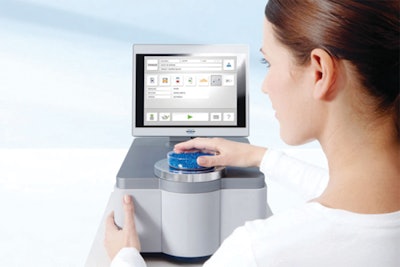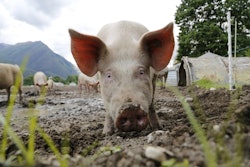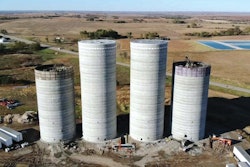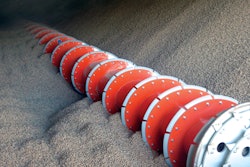
Maintaining the nutritional profile in feed and grains is critical to delivering the desired product, performance and consistency.
Overformulating for protein and other nutrients to ensure that label claims and nutritional profiles are met can increase ingredient costs and reduce profit margins for commercial feed manufacturers.
FT-NIR technology is a valuable tool that can provide real-time nutrient measurements for all feed and grain products. NIR (near infrared) is a rapid method to predict nutritional values on grain, ingredients and finished feeds.
Measures the absorption of near-infrared light
FT-NIR is quick, cost-effective, accurate, easy and safe since no hazardous chemicals are used. It simply measures the absorption of near-infrared light of the sample at different wavelengths.
Advantages of FT-NIR compared to other analytical methods include:
- Easy and accurate analysis. Since NIR methods require no sample preparation, the amount of sampling error is significantly reduced, improving the accuracy and reproducibility of the analysis.
- Cube Corner design. Bruker’s patented “Rock-Solid-Interferometer” uses Cube Corner mirrors, in contrast to flat mirrors which are used in the classical “Michelson Interferometer.” Cube Corner mirrors guarantee an ultra-precise guidance of the light beams passing the interferometer, even if external vibrations occur.
- Direct calibration data transfer. No Standardization Spectrometers based on the so-called “Fourier Transform” (FT) technology provide high wavenumber accuracy and permit the transfer of calibration models from one FT instrument to another without time consuming standardization routines.
- No sample preparation. For an NIR measurement in the lab, the sample is simply filled into a glass vial or Petri dish, because glass is transparent in the NIR spectral region. Since NIR light not only analyzes the surface but penetrates deeper into the material, it is ideal for measuring heterogeneous samples.
FT analyzers provide (in contrast to scanning dispersive spectrometers) the possibility to rotate the sample during the analysis in order to scan a bigger sampling spot compared to a static measurement, leading to more representative result and higher accuracy.
Measuring through glass avoids complicated sample preparation affected by tilt. - No waste, no chemicals. In contrast to time consuming wet chemical analysis, the NIR method produces no wastes, causes no pollution, and requires no chemical reagents.
- Fiber optics. By using fiber optic probes, NIR spectra can be collected directly from both solids and liquids directly inside containers. Under process conditions the probes are mounted directly into the reactor transmitting the light over long distances (> 100 m) to the spectrometer.
Applications
With only one measurement, multiple components can be analyzed in less than one minute in solid samples as well as in liquids using FT-NIR.
This opens an array of applications, making FT-NIR a valuable tool.
Raw Materials Identification. Every organic material has a unique NIR spectrum — like a fingerprint. Therfore, NIR is widely used as a reliable tool for substance identifications and authentications, especially for inspecting incoming raw materials.
Fully automated software provides quick information if a tested raw material is identical with the expected substance (identification) and if it meets its dedicated specifications (authentification).
Multi-Component Quantitative Analysis. The amount of light absorbed by the sample depends on the concentrations of its ingredients. To quantify the amount of different ingredients the spectrometer determines the light loss at the related frequencies. Since the
NIR spectrum contains the analytical information of every component simultaneously, the operator receives all quantitative information by collecting just one spectrum.
For markets with standardized products like the feed industry, Bruker offers complete solutions with precalibrated systems. Regardless if the instrument is delivered ready-to-use or if users create their own calibrations, a fast analysis of multiple components simultaneously will help to save both, time and money.
In-Line Process Control. With fiber optic probes, the point of analysis can be inserted directly into the reactor or container. Specific quality parameters can be controlled in real-time directly in the process, rendering time consuming lab analysis unnecessary.
Since results are obtained within a few seconds, a statistically significant amount of data can be created. This allows the NIR spectrometer the direct control of processes, leading to shorter cycle times, better product quality, and less out-of-spec batches. ■
Information for this article was provided by Bruker Optics.
Bruker Optics recently offered a webinar titled “Simplify Feed and Ingredient Measurements with Pre-Calibrated FT-NIR Analyzers” hosted by Dean E. Roberts, director of market development. It’s now available on-demand at FeedandGrain.com by clicking here.


















